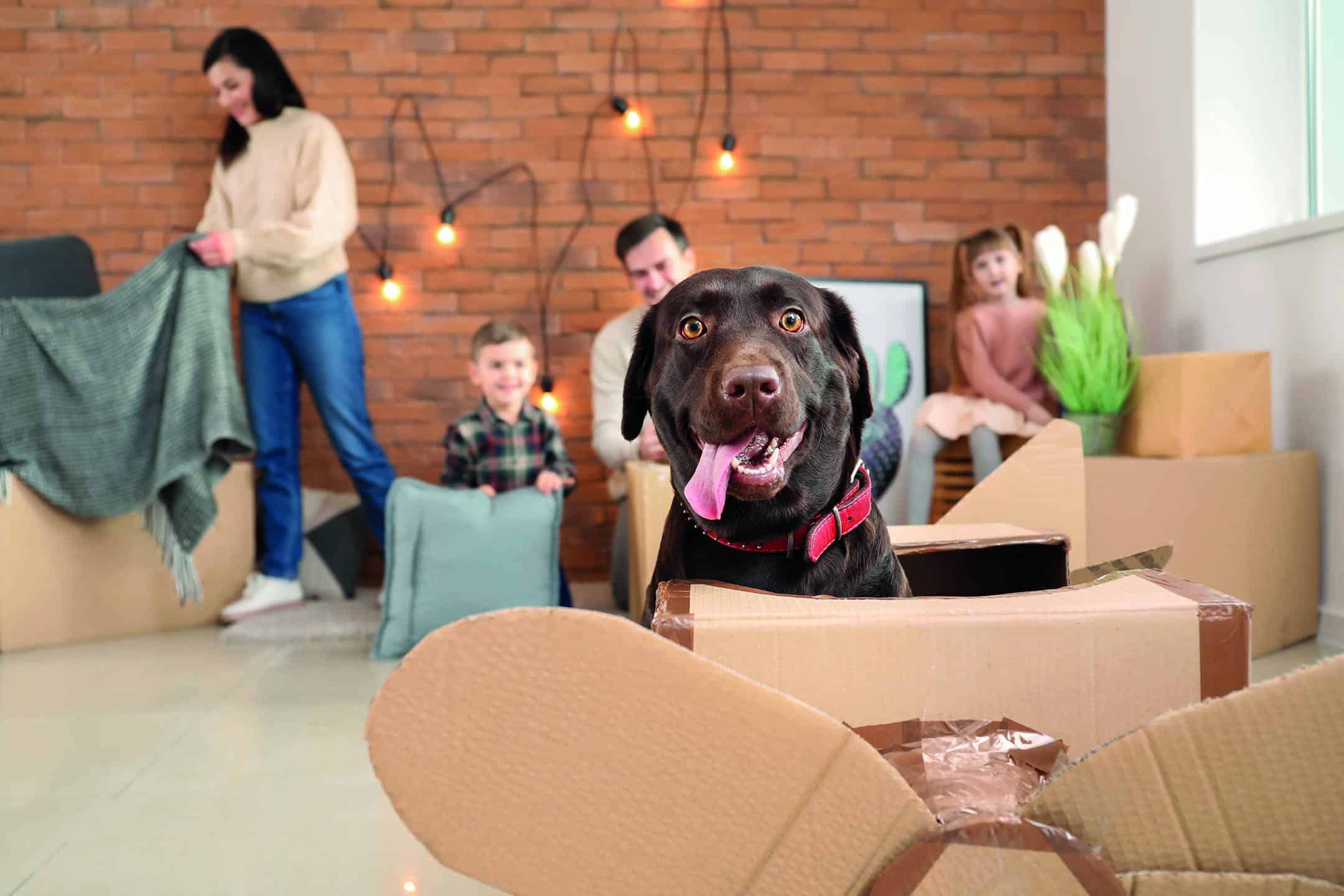Moving with Pets
Moving home is an exciting step for you and your family, but with all the noise, packing, and organising it’s no wonder it can be a stressful time too. For many of us, pets are part of the family. Did you know that moving house can be a stressful experience for your pet?
We’ve put together a list of five tips to help keep your pet safe and stress-free during your moving process.
Set up a room for your pet
With all the hustle and bustle, it’s important that your pet has a quiet space to eat, sleep, and play. Try clearing a room at your current address ahead of time and set up your pet’s litter tray, food bowl, toys, and bed.
Doing this in advance will allow your pet to get used to staying in one room. By the time the big move day arrives, your pet should have a stress free, quiet location away from any disturbances.
Book a kennel or cattery
Moving can be a stressful time for our pets, too. You know your pet better than anyone, so if your pet has a nervous temperament they could benefit from a stay in a kennel or cattery. Separating your pet from the busy move day is a great way to make sure they remain as calm as possible.
Check that your pet’s vaccinations are up to date ahead of booking a kennel or cattery. Make sure to take some time to research the right place for your pet.
Keep your pet safe when you move
If you decide to bring your pet along for your removal journey, it’s important to make sure they’re safe.
If possible, you should have already set your pet up in a quiet space away from the noise. When you’re ready to travel to your new home, moving your pet into transportation should be the last thing you do. This reduces the amount of time your pet will be placed in an unfamiliar setting.
If you own a dog, make sure you use the appropriate equipment to keep them safe. This could be a dog seatbelt or a crate that offers your dog enough room to stand up at full height, turn around, and lie down comfortably. If you’re transporting a cat, using a secure and roomy cat carrier is likely the best option. Include their favourite toy or blanket to keep your pet calm.
Check that your pet is microchipped
Moving to a new location can be disorientating for your pet. If your pet hasn’t been microchipped, it’s a good idea to arrange this. Make sure you inform the microchip company and your vet about your new address.
In the unfortunate instance that your pet does get lost, having a microchip means you’re much more likely to be reunited.
Spend some time with your pet
When you arrive in your new home, make sure to spend some quality time with your four-legged friend.
If you have a dog, taking them for a walk around the garden on a lead can help get them acquainted with their new home. As soon as your garden has been secured, feel free to let them explore.
Ideally, when moving to a new house, outdoor cats should be kept inside for a couple of weeks. When they’re ready to roam free. Leave some food or a familiar smelling item outside to help guide them home, such as their favourite food or a set of garden pots you owned in your previous home.
To find out more about how Doree Bonner International can assist with your upcoming move and the various services we provide, you can find out more here or request a free quote. Alternatively, please contact a member of our team for advice and information relating to your specific move requirements. We look forward to hearing from you.











